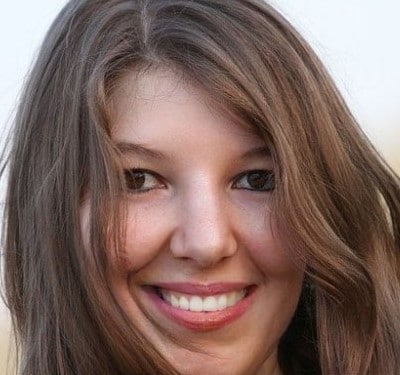The shift from traditional fossil fuel-powered to electric cars has dramatically accelerated in recent years, galvanised by the public’s increasing recognition of the climate change threat. However, consumers may be less aware of the wide and ever-growing growing array of options available in the “green” vehicle sector. In fact, while much of the conversation surrounding zero-emission vehicles centres on battery-powered EVs, innovations in hydrogen fuel cell vehicles are gaining prominence.
—
Our environment is in crisis. That, unfortunately, is not news. What may be surprising to most people, however, is the dramatic acceleration in interest, access, and purchase intention for electric vehicles (EV).
Nevertheless, not all EV technologies are created equal. While the majority of EV promotions and sales involve battery-powered EVs, ongoing innovations in hydrogen fuel cell electric vehicles (FCEV) are making them an increasingly attractive option for some consumers. This article compares the pros and cons of standard EVs and FCEVs.
Lifetime Carbon Footprint
At first blush, it would seem that FCEVs enjoy a distinct advantage over standard EVs when it comes to their lifetime carbon footprint. FCEVs produce electricity by injecting hydrogen into the vehicle’s fuel cells, rather than drawing electricity from a battery, as with most standard EVs. Because the only by-product of the process of converting hydrogen into electricity is water, no harmful emissions are released.
However, there is a caveat, not related to the process of turning hydrogen into electricity but rather to the production and storage of hydrogen. Because hydrogen is a gas that is rarely found on Earth, it must often be generated through a range of means. How hydrogen is produced will greatly impact the lifetime carbon footprint of an FCEV.
For example, in so-called grey hydrogen, the gas is produced through a process known as “steam reforming”. Steam reforming requires the use of fossil fuels, particularly natural gas, which can therefore significantly increase the overall amount of carbon emissions produced in fuelling the vehicle.
On the other hand, green hydrogen refers to hydrogen that is produced through the use of renewable energy through a process known as “electrolysis”. During electrolysis, water molecules, which contain both hydrogen and oxygen, are split and the hydrogen atoms are captured and used to feed the FCEV’s fuel cells.
You might also like: Is Green Hydrogen Viable and Clean?
Much like FCEVs, the lifetime carbon footprint of a standard battery-powered EV will depend very much on how the energy supply is sourced. Although all standard electric cars are powered by batteries, not all batteries are the same, and battery type and material sourcing are key factors regarding how much carbon is emitted across the EV’s lifespan.
Most EVs are powered by lithium-ion batteries, which do not emit CO2 when used to power the vehicle. However, lithium-ion batteries require a significant number of materials, including liquid electrolytes, the sourcing of which can significantly increase the EV’s lifetime carbon footprint,
Nevertheless, the use of renewable energy to source battery materials can significantly reduce or eliminate carbon emissions. Moreover, the switch from lithium-ion to solid-state batteries, which use few materials that principally consist of ceramic components, can further reduce lifetime carbon release by as much as 38%.
Thus, when it comes to lifetime carbon footprint, there is no clear winner, as the cumulative output of both hydrogen and electric cars depends largely on how materials are sourced.
Efficiency
One of the most significant disadvantages of FCEVs is their inefficiency. Because of the complex processes involved both in producing and storing hydrogen and in converting the hydrogen into electricity in the fuel cells, FCEVs are generally only around 38% efficient, meaning that for every 100 watts of energy produced, only around 38 watts can be used to power the FCEV.
Unlike FCEVs, battery-powered electric vehicles are quite energy-efficient. While FCEVs are less than 40% energy-efficient, most battery-powered electric cars and other vehicles boast around 80% efficiency. This means that for every 100 watts of energy produced, nearly 80 watts will be used to power the vehicle.
When it comes to energy efficiency, battery-powered EVs are the clear winner, requiring half the amount of energy as FCEVs to generate power.
Refuelling/Recharging and Accessibility
The principal distinctions between FCEVs and EVs in regard to refuelling and recharging relate primarily to infrastructure. Because the vast majority of zero-carbon vehicles are battery-powered EVs, a robust infrastructure is being developed to meet the rapidly growing demand for EV charging stations.
In addition, given the rapidly increasing demand for EVs, innovations to extend battery life and expedite battery charging are resulting in EVs which can travel several hundred kilometres on a single charge. Moreover, charging times are dramatically declining, with newer electric cars capable of achieving an 80% charge in around 30 minutes.
In addition to the increasing, despite still relatively sparse, availability of charging stations, home charging stations are becoming ubiquitous for EV owners who live in single-family homes where personal EV chargers can be installed.
Refuelling stations for FCEVs, on the other hand, are much more difficult to locate. This can be attributed to the relative dearth of FCEVs on the market, as well as the public’s relative lack of familiarity with FCEV technology. However, when these stations are available, the speed of refuelling and the driving range per tank make FCEVs a clear winner: an FCEV can generally be fueled in under four minutes and can travel around 300 miles on a single tank.
Given recent infrastructure developments and the predominance of battery-powered EVs as compared with FCEVs, the former enjoys another distinct advantage over the latter in regard to refuelling/recharging and accessibility.
Production and Disposal
Production and disposal issues are perhaps among the most significant problems currently associated with standard battery-powered EVs, particularly those powered by lithium-ion batteries.
The sourcing of lithium batteries, for instance, can result in profound environmental damage and can produce as much as 16 tons of carbon emissions. In addition, because less than 5% of EV batteries are currently being recycled, there is a substantial risk of environmental contamination relating to spent battery disposal. According to recent estimates, by 2030, the number of EV batteries requiring disposal will roughly equal the number currently produced annually.
Conversely, when created through “green” processes such as electrolysis, hydrogen and fuel cell production for FCEVs result in comparatively low levels of carbon emission. Moreover, fuel cells are generally durable and can typically be expected to last through the lifetime of the vehicle, significantly reducing hazards related to disposal.
Thus, in regard to production and disposal, “green hydrogen” FCEVs have a strong leg up over battery-powered EVs.
The Takeaway
Alternative fuel vehicles are more than just the wave of the future, they may well be the key to saving our planet. However, vehicle technology varies widely, with battery-powered elective vehicles and fuel cell electric vehicles at the forefront of sustainable innovation.
Featured Image by (Joenomias) Menno de Jong from Pixabay
You might also like: Why Electric Cars Are Better for the Environment


















